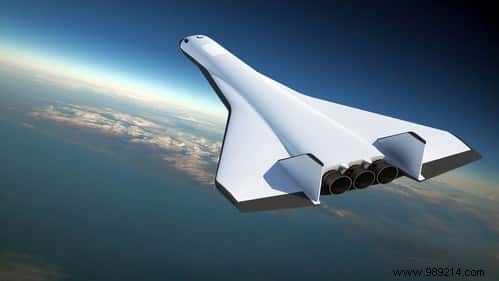The development of the world's first fully reusable horizontal take-off and landing spaceplane offered by Radian Aerospace has just reached a critical investment milestone. But what do we really know about this vehicle called Radian One?
Washington-based Radian Aerospace announced Wednesday, January 19 that it has raised $27.5 million in seed funding. This new round of seed funding was led by venture capital fund Fine Structure Ventures. Other investors, including Exor, The Venture Collective, Helios Capital, SpaceFund and The Private Shares Fund also participated, according to Radian representatives. This fundraising will help in the development of Radian One, a crew-carrying orbital space plane.
The commercial market opportunity for the launcher is estimated at two hundred billion dollars (hence the number of investors).
Radian One is an ambitious aircraft designed to launch and land horizontally on a runway . It thus differs from the old NASA space shuttles which landed horizontally, but had to take off using solid rocket boosters. To take off, Radian One will also receive "take off assistance" with the purpose of accelerating the vehicle on the runway.
The new space plane will be fully reusable and capable of spending up to five days in orbit . Eventually, the company aims to have its vehicles flying again just 48 hours after the wheels land.
Some data is still missing, however, particularly regarding the size of the vehicle and the number of passengers it can carry. It is also not yet known when these first planes will be able to start flying. Representatives of Radian, however, said in a statement that they have signed several launch services agreements with various private companies and government agencies, but did not name them.
“We believe that widespread access to space means unlimited opportunities for humanity “said Radian CEO and co-founder Richard Humphrey. “Over time, we intend to make space travel almost as easy and convenient as air travel “.

The CEO will not rely solely on tourism. According to him, some flights will be devoted to missions aimed at the search or the delivery of point-to-point cargo. According to the company, the vehicle will be able to deliver up to 2.2 tons of payload in less than an hour almost anywhere on the planet, as SpaceX's Starship could soon offer, but with much larger payloads.